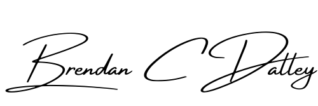Fear is a terrible thing. Not something natural like fear of spiders or fear of waking up in a shopping centre nude, but fear of life. Fear of living. If you are one of those fearless souls that have never been afraid to jump into a new opportunity with both feet, then you won’t understand, but fear is awful. On one hand, you are afraid of never achieving your goals, whilst on the other you are afraid of failing. You are afraid of asking someone special out in case they say no, whilst on the other hand, you are afraid of going through life alone. Both a fear of not living up to your expectations and a fear of never trying, leave a hollow pit in your stomach, to the point that you end up doing nothing. The pain of living without something ends up being more acceptable than trying and failing. Added to this, there is a learned fear from having something metaphorically blow up in your face that leaves you terribly reticent to try again. So what’s the answer? How do you face your fears?
Fear is physical
Let me first say that there are terrible physical symptoms that go with fear. Just like its close relative, anxiety, fear comes with queasy stomachs, nervousness, panic, the shakes and a strong desire to run and hide. When people say that something threatening makes them feel sick to the stomach, they are not kidding.
Thankfully most of us are not in the position where a dirty great soldier or a man eating tiger are about to burst through the door, but that does not mean we don’t fear. Fear is relative and it is natural. We fear failure, we fear the breakdown of relationships, we fear being damaged physically and we fear loss. In short, we fear pain in all its forms, be they unfair or self-inflicted, so naturally we fear any perceived threat that may bring that pain.
I’ve had many worries in my life, most of which never happened
Mark Twain
Catastophising – one of the building blocks of fear
Mark Twain, apart from being a fabulous writer, was also possessed of the ability to reduce great truths down into simple phrasing. The particular truth he expresses in the above quote, is that fear is both extremely natural and extremely irrational. The things that we fear rarely come into being, nor are they likely to if we view them completely rationally. The trouble is that we are all a little narcissistic at times. When we perceive a threat, this tendency to protect ourselves first, immediately steps to the fore. If we are dodging a runaway car, then this self protection mode is useful. If we then, having survived, spend our whole lives worrying about the danger of stepping outside the front door and asking ‘what if…’ questions, then we are catastrophising the future. Catastrophising isn’t helpful. In fact it is debilitating.
Rumination – the next block along
Where catastrophising is the fear of what might happen, rumination is the fear that what has happened will get worse or harm you. Even though at heart, we know that what is done, is done, we subconsciously believe that by turning events over and over in our minds, we can solve them or make what happened go away. We all have had those voices in our heads..”Why did I say that?” … “How could I have been so stupid?” …”Maybe she didn’t notice…” and so on. If we let those voices and questions dominate our thinking, then we are ruminating.
Avoidance – block number three
When I was younger, I wanted to be many things. At one time in my early teens, I considered acting like many do. Whilst now I see that that choice of careers would not have sat well with my emotional make up, at the time I really liked the idea. When push came to shove as I grew into manhood, a nagging thought kept entering my head. “What if I try and fail? People will laugh at me and know I’m a fake”. In the end, I figured that if I don’t try, I can’t fail. I avoided the fear of failure and peoples judgement by swallowing the slightly more palatable pill of not trying. This is known as maladaptive perfectionism and is a response to fear.
As an older man, I now know that people will always make judgements, no matter what you do. I also know that I have made some really silly decisions in life and not one of my friends disowned me because of them. A really bad mullet and a short lived earring come readily to mind. It is natural for all of us, but particularly young men and women, to worry about the opinions of others and potential rejection. The only advantage I have as an older person is that I choose the people I want to impress slightly more wisely. Still, the avoidance of failure, embarrassment and rejection develop from fear.
The only way
Fear will always be with you. It is as natural to our human condition as blood or breathing. The reason that the ‘fight or flight response’ is a response and not a choice, is simply because it is ingrained in each of us. It is part of the human condition. If someone says to you that they don’t feel fear, then tell them they are an idiot or a liar, probably both. The only way to conquer fear is to learn to live with it. The only way to not let it overwhelm you, is to learn to control it. I’m sure that Nelson Mandela said it better “I learned that courage was not the absence of fear, but triumph over it. The brave man is not he who does not feel afraid, but he who triumphs over it.”
Cognitive behavioural therapy (CBT) – the armour we wear to face fear
Cognitive behavioural therapy sounds highly complex and very scientific. Now while the minds that created and fine tuned it might be, its practice isn’t. Essentially CBT teaches you to recognise thinking errors, of which rumination and catastrophising and two, and challenge them. When we can recognise and name our thinking errors, we are then well armed to put the skills that CBT teaches us to good use and bring our fear under control.
Cognitive behavioural therapy is brilliant in its simplicity. Many of the great books written about it, break it down into sections with appropriate exercises. It doesn’t have to be an all or nothing approach. Techniques like Socratic Thinking and ABCD help you to challenge your thought processes and bring them under control. Each aspect of CBT will be useful to different people, depending on their circumstances. CBT is a bit like Batman’s utility belt for mental health. It has a useful gadget for most situations.
If I wrote in detail about CBT, this would be a book and not a post. As it is, it is getting lengthy, so I’ll leave the important stuff to the experts. Your job, if fear and worry control your enjoyment of life, is to look up the book I suggest and get reading or find a Psychologist that can introduce you to the techniques. Here’s to controlling our thoughts and not the other way around.
Links
Change Your Thinking [Third Edition] : Edelman, Sarah: Amazon.com.au: Books


Spot on! Another great piece of writing. My 10 year old grandson is heading towards ‘maladaptive perfectionism’ & I see it already beginning to put ‘shackles’ on him. I’ll show this piece of writing to his mum.
Any ideas how to help him?
👌✍️💕
Thanks Sue. The book in the links is really helpful. I would consider finding hime a good child Psychologist. They can do wonders, especially with anxiety and worry. A GP can write a Mental Health plan.
Good post Buddy